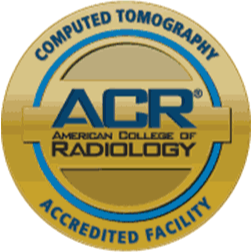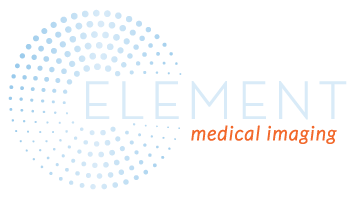Exam Explanation
 CT uses special x-ray equipment to obtain image data from different angles around the body. The computer takes the data and creates a visual image of each slice of information. The Radiologist is able to review the slices of information in sequence, which creates a two or three dimensional image of the inside of your body. CT imaging is particularly useful because it can show several types of tissue: lung, bone, soft tissue and blood vessels with great clarity. CT helps the Radiologists diagnose problems such as cancers, cardiovascular disease, infectious disease, trauma and musculoskeletal disorders.
CT uses special x-ray equipment to obtain image data from different angles around the body. The computer takes the data and creates a visual image of each slice of information. The Radiologist is able to review the slices of information in sequence, which creates a two or three dimensional image of the inside of your body. CT imaging is particularly useful because it can show several types of tissue: lung, bone, soft tissue and blood vessels with great clarity. CT helps the Radiologists diagnose problems such as cancers, cardiovascular disease, infectious disease, trauma and musculoskeletal disorders.
Exam Preparation
Tell your physician or the technologist if there is any possibility that you are pregnant or if you have a history of allergies. Prior to the exam a technologist may speak with you on the phone to obtain necessary medical information and discuss instructions to be followed the day of the exam.
During the Exam
After you arrive for your appointment, depending on the area of your body to be scanned, you may need to change into a gown. Some scans may require a contrast agent to help highlight the areas inside your body. This is given in the form of a drink and/or injection. Once you are prepared for your exam, your technologist will help position you on the table of the CT scanner. Usually you will lay face up and the table will move into the large donut shaped scanner. While inside the scanner, you will be able to see your outside surroundings. The technologist will talk with you from the control room where they can see you at all times. It is very important to lay completely still. Periodically, the voice-activated component may speak to you, instructing you to hold your breath for a short period, not swallow, etc. Most CT examinations take about 15-20 minutes.

